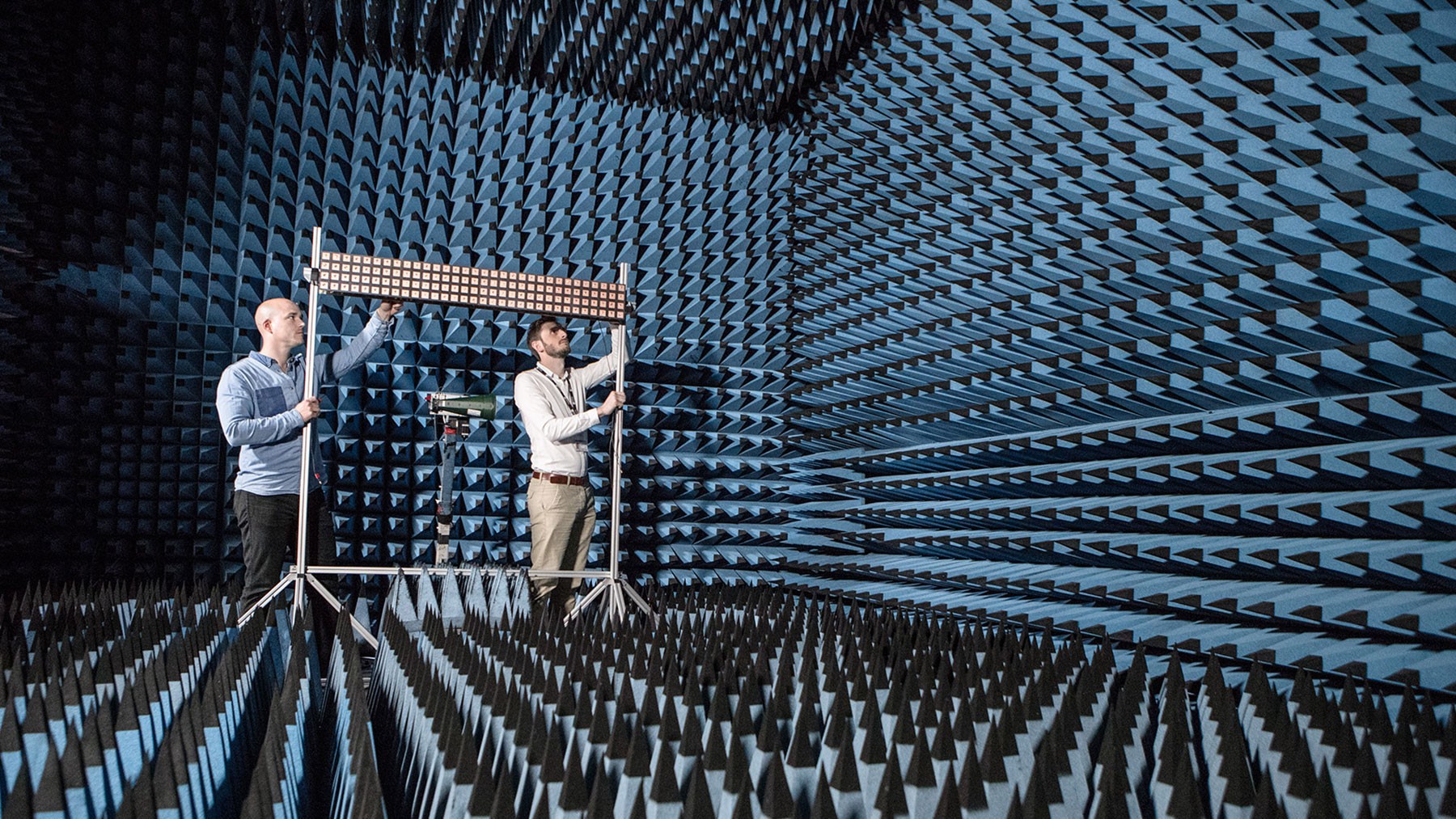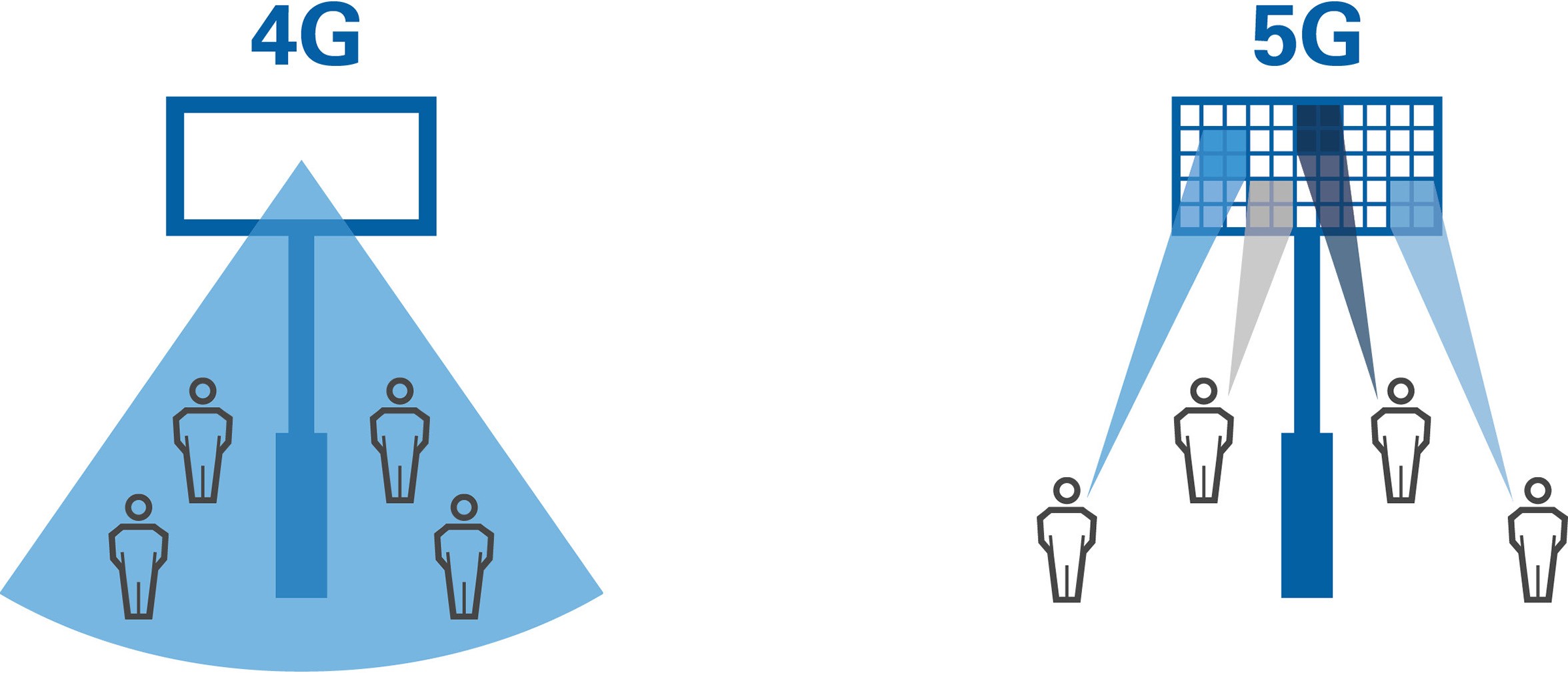
5G Ushers in a New Era of Wireless Test
BUSINESS INSIGHT
SEMICONDUCTOR | 5 MINUTE READ
5G requires new test methods to ensure the viable commercialization of 5G products and solutions across many industries and applications.
AUTHOR: Charles Schroeder, NI Business & Technology Fellow
- The promises of 5G come with the cost of added complexity.
- New techniques must be developed to test 5G.
- New, lower cost over-the-air test will be required.
Since the beginning of cellular communication, test engineers have been iterating on an accepted set of measurements and techniques to test wireless communications technology in high volumes, from RF semiconductors to base stations and mobile handsets. But with 5G, the technology inside these wireless devices will be more complex, and the highly optimized techniques that have been used to test previous generations will need to be rethought. Testing 5G components and devices with over-the-air (OTA) methods instead of the cabled methods currently in use will be necessary to validate the performance of 5G technology. As engineering leaders, we need new test methods to ensure the viable commercialization of 5G products and solutions across many industries and applications.
Boosting Bandwidth
One of the key goals of the 5G standard is to significantly increase data capacity as user data demands continue to rise, but to achieve the target peak bandwidth of 10 Gb/s per user, new technologies are being introduced. First, the 5G spec includes Multiuser MIMO (MU-MIMO) technology that allows users to simultaneously share the same frequency band through beamforming technology that creates unique, focused wireless connections for each user. Second, the 5G standard adds more wireless spectrum, expanding into centimeter and millimeter wave (mmWave) frequencies.

Physical implementations of both the MU-MIMO and mmWave technologies use significantly more antenna elements than previous generations of cellular standards. The laws of physics dictate that signals at mmWave frequencies will attenuate considerably faster as they travel through free space than signals at the current cellular frequencies. So, for a similar transmitted power level, mmWave cellular frequencies will have a much smaller range than current cellular bands.

How will we fit all these antennas into tomorrow’s cell phones? Luckily, the antennas at mmWave frequencies will be much smaller than the cellular antennas used for current standards. New packaging technologies, like antenna in package (AiP), will ease the integration of these antennas into the small space constraints of the modern smartphone, but the arrays of antennas may be completely enclosed without any directly contactable test points.

Using OTA to Address New Challenges
For test engineers, the increased frequencies, new package technologies, and greater antenna counts will make it difficult to keep quality high while limiting increases in both capital costs (cost of test equipment) and operating costs (time to test each device). New OTA techniques can help with these, but they present challenges as well.
First, measurement accuracy will be challenging. Unlike cabled tests, when making OTA measurements, test engineers will deal with the additional measurement uncertainty that comes with antenna calibration and accuracy, fixturing tolerance, and signal reflections. Second, brand new measurements must be integrated into device test plans for anechoic chamber integration, beam characterization, optimal code-book calculation, and antenna parameter characterization. Third, as RF bandwidths continue to increase, the processing needs for calibrating and making measurements on these wide bandwidths increase as well, which adds to test time concerns. Finally, test managers must make additional business considerations to ensure product quality while minimizing the impact to time to market, capital cost, operating cost, and floor space (to accommodate the OTA chambers). Over the next few years, the test and measurement industry will be rapidly responding to these challenges with many new innovations. Test groups should consider highly flexible, software-defined test strategies and platforms as a way to ensure their capital expenses today can keep pace with this rapid cycle of innovation.
Though OTA presents challenges, it also offers benefits. First, OTA is the only option for AiP technologies because the antenna arrays are integrated inside a package with no way to directly cable to the array elements. Even if test engineers could contact individual antenna elements using conducted test methods, they face the difficult choice of testing them in parallel (at the capital expense of needing more instruments) or testing them serially (at the operating expense of test time and throughput). Many technical issues still need to be solved, but OTA test offers the possibility of testing the array as a system instead of a set of individual elements, which could lead to the greater efficiency promises of system-level test.
In the past, test equipment suppliers and test engineers have risen to the challenge of testing increasing performance and complexity while minimizing time to market and cost of test, and they’ll do it again for 5G. Though the challenges of testing 5G look complex today, engineers around the world are already developing the new test instruments and methods, like OTA, that are necessary to make 5G a commercial success.



